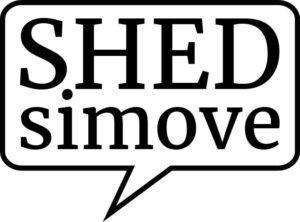How to Have Great Ideas…
Below are some excerpts from my book,‘Success Or Your Money Back’ that outline some of the themes I cover in my speeches as a motivational and inspirational speaker…
How To Unlock The Amazing Ideas Inside You
Many people view the ability to come up with new and innovative ideas as something ‘innate’ or ‘magical’. I often hear people say: ‘Oh but I’m not creative’. Well, I’m here to categorically tell you that creativity is not actually a shady ‘dark art’ that only some people are born with – or a skill the most talented practitioners can learn. In fact, every single human being can be creative and I’ve got some easy tricks that will help anyone come up with new and exciting ideas. I use them all the time and firmly believe that creativity can be learned. It’s just a series of techniques like these:
1) Twist Or Update A Product Or Service That’s Already Out There
It’s a common misconception that new ideas come right out of the blue or that they result from wildly left-field, original thoughts that no one else has ever dreamed up.
Not true. First, there are more than six billion brains in the world (and even more that have been active in the past), so it’s likely that one or more of those brains may well have come up with a certain specific idea before.
Second, even if an idea has indeed been thought of previously, if no one has put that idea into practice (by actioning it), it won’t actually have come to life. Most ‘new ideas’ are often not that far removed from existing ideas; they’ve just been updated in some clever way, so that the end result is different from what has gone before. And that’s what’s important – that’s what makes them ‘new’.

Here’s a very small-scale example from my life. I wanted to create a fun new gift that office workers might want to buy during the ‘Secret Santa’ gift-giving season that
happens over the Christmas period. So, I began to think about how I could take something already existing, a clock, and alter it slightly to give me a ‘new’ type of clock. I decided to create a clock with only two numerals on the face – the five and six, and add some wording to the middle of the clock that read ‘It’s Nearly Home Time’. I called my creation ‘The Optimistic Office Clock’.
2) Break / Challenge A Rule – Or Conventional Method Of Working
The rules around us are fascinating. They’re how we humans organise ourselves at this point in time, hopefully with the aim to be ‘civilised’ or to make the system work. I often think that in a hundred years’ time, many of the rules we have today might be different. So what does that make us now? Wrong? Or just ‘doing our best’ perhaps? The important point is that when someone tells you something HAS to be done the way it is because it’s a rule. Or even that it’s ‘always been done that way’, then you should see this as a wonderful flashing beacon that shows you an opportunity to be creative by producing something new that everyone else who follows the rule would never do.
Sometimes, when you closely examine something that people around you. And you – believe is a rule that cannot be broken, it unravels like a cheap sweater.
3) Look At Other Industries You Don’t Work In, Be Inspired By What They Are Doing, Then Use Their Examples To Help You Create New Ideas For Your Industry
This technique sounds like I’m about to recommend ‘industrial espionage’. Well, not quite, no need for wire tapping or going through anyone’s bins with this one (sure you’ll be delighted to hear that). In fact, this beautifully simple, and yet rarely used method is another brilliant way of being stimulated to come up with your version of something already existing. When you’re chasing any goal, it’s easy to get completely immersed in the subject area it’s related to.
Instead, you must feed your brain with inputs that spark it to start thinking along interesting routes. Only when you feed your imagination will it flourish. With this technique, you start by looking at what other industries or people are doing OUTSIDE of the sector your goal is in. And then take their success (or failure) and use it as the basis for your new ideas. You can either take an outsider’s process, marketing idea or even product as your starting point. All that matters is that your brain is triggered by something from a source not normally found in the area that your task occupies.
 A very simple, literal example of this technique is when I used what was happening in the technology industry to help me dream up a new item for the gift industry. As you know, the tech giant Apple has released many successful products, one of them being the multi-million selling ‘iPad’, a product that single-handedly revolution- ised the ‘tablet computer’ market. Now, when the iPad was launched with huge fanfare, I watched with keen interest.
A very simple, literal example of this technique is when I used what was happening in the technology industry to help me dream up a new item for the gift industry. As you know, the tech giant Apple has released many successful products, one of them being the multi-million selling ‘iPad’, a product that single-handedly revolution- ised the ‘tablet computer’ market. Now, when the iPad was launched with huge fanfare, I watched with keen interest.
As I saw how well it sold and watched the iPad become a global phenomenon, I began to admire this success and see if I could apply anything about its meteoric rise to the gift industry. And that’s the pivotal part to this technique – not only to identify a success from an industry outside yours. But also to give that success a little bit of thought so that you can examine the processes involved. This will be sure to help you with your ‘Eureka’ moment.
As soon as I started to think along these lines, a simple idea immediately popped into my head. I’d make a product that looked exactly like the iPad but made entirely of paper and call it the ‘iNotePad’. Not only would it be a fun gift, it’d be a functional, useful notepad, too. So, I contacted a talented graphic designer I’d worked with in the past. And, after we’d agreed on the look of the new notepad. I sent the designs to China.
While I was getting the first samples of the pad made. I took great care to ensure that the top of the notepad was covered with a thin clear acetate sheet. So that the finished pad would look like it had a reflective screen, just like the original object I was parodying. This principle of caring about the experience of every ‘end user’ is totally vital to success in any area, whether you’re making a novelty product, trying to get a job, finding a life partner or running a company.
And in the end, I sold tens of thousand of my iNotepads…
Blog Posts
- Should You Trademark, Copyright Or Patent An Idea?
- How To Launch A New Product
- ‘After Lunch Speaker’ at the Royal Opera House
- Motivational Speaker Los Angeles
- DIGGIT event, Ljubljana, Slovenia
- A Motivational Speaker in Bucharest Romania…
- RESPONSIBLY BEER from Shed Simove
- How a Post-it got me noticed at a speech in London…
- Speaker Sheet | Shed’s At A Glance Speaker Sheet
- Shed as a motivational speaker on creativity | Sales and marketing
- Motivational Speaker Kingston University, London
- How To Overcome Your Fear Of Public Speaking
- How To Use Standup Comedy To Engage Your Audience When Public Speaking
- How To Craft The Best Elevator For Your Business Or To Land A Job
- How To Make A Square Video
- These Top Networking Mistakes Will Guarantee You Won’t Get A Call Back
- Creative Solutions For Work-At-Home Productivity While Starting Your Business
- Careers That Make Great Springboards For Transitions To Entrepreneurship
- How I Drove Huge Global Media Exposure With A Simple Dating Idea
- Best Activities For Team Building In Las Vegas
- Why Some People Don’t Succeed In Life?
- 11 Tips to Improve Work and Life Balance in Los Angeles
- Top 10 Presentation Mistakes You Should Avoid At All Costs
- 3 New York Fortune 500 Companies Who Need Motivational Speaking To Get Them Through Tough Times
- 7 Ways This Entrepreneur Has Got Into Trouble & The Lessons That Boosted His Success
- How To Add Humor To Your Keynote Speaking Engagement
- 16 Different Types Of Keynote Speakers You Should Consider For Your Next Event
- How To Prepare For A Motivational Speaker At Your Conference
- ‘Make America Grate Again’ Grater Dares To Take On Trump’s Nutty Side
- How To Hire An Inspirational Speaker For Your Event
- A Motivational Speaker In Salzburg, Austria…
- On The Same Bill As Keynote Speaker Gary Vaynerchuk!
- How To Manage Toxic, Difficult People In Work And Life
- How To Change Someone’s Mind With Careful Persuasion
- Funny Public Speaking Topics To Win Over Your Audience
- How to Be A Confident Leader In Tense Situations
- How To Connect An Audience That Distrusts You & Change Their Minds
- Great Ideas Gone Viral & Done Right | Shinder Dating App Drives Massive Exposure & Girls Too!
- 6 Inspiring Product Launch Venue Ideas In Los Angeles They Will Never Forget
- Radical Creativity At Burning Man In Nevada Will Inspire You To Think Beyond The Box
- 8 Public Speaking Mistakes That Will Get You Fired in 5 Seconds Flat
- 9 Ways To Build Confidence In Business & Take On The Universe With Panache
- How To Give A Memorable & Inspiring Speech
- 8 Powerful Tips For Public Speaking Onstage
- Team Building Exercises In Los Angeles That Are Fun (or virtually anywhere)
- Great Things Entrepreneurs Can Learn By Attending Las Vegas Trade Shows & Seminar Talks
- How Los Angeles Startups Succeed On A Guerrilla Approach To Everyday Problems
- 4 Things Every Budding Entrepreneur Should Do After Arriving In Las Vegas
- Why Los Angeles Is The Driving Force Of Innovative Ideas
- How Watching Inspirational TED Talks Can Lead You To Become A Better Entrepreneur
- How To Become A Motivational Speaker
- Creativity is the new power! Knowledge is dead!
- How To Train Your Mind To Be Creative And Gain A Competitive Edge
- What Does an After Dinner Speech Do?
- A Motivational Speaker In Austin, Texas…
- How to Write a Popular Blog Post on Quora
- Looking For A Motivational Speaker?
- Why I Hate Business Cards
- How to Have Great Ideas…
- I’m Named a ‘Marketing God’!


LEAVE A REPLY